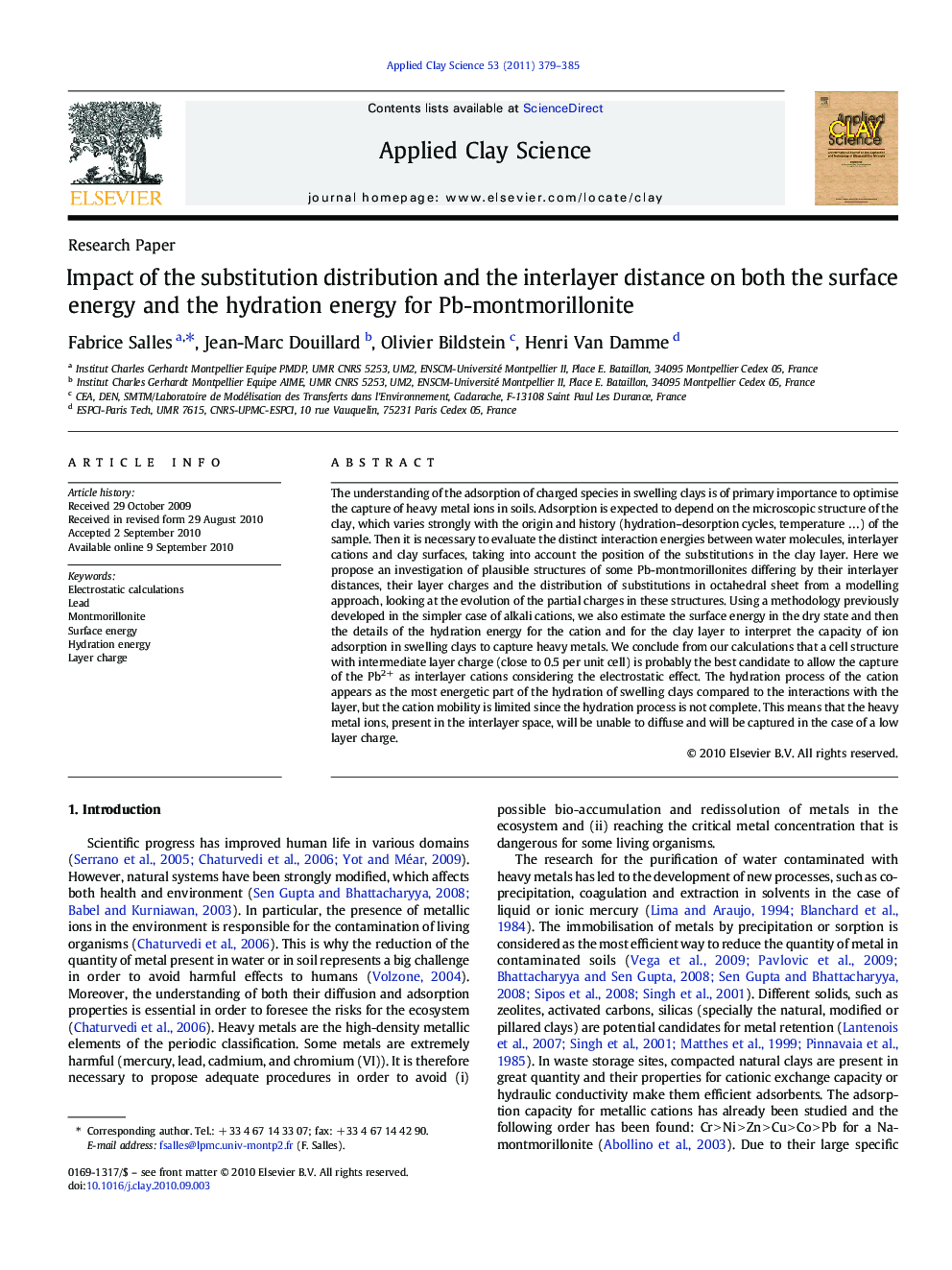| Article ID | Journal | Published Year | Pages | File Type |
|---|---|---|---|---|
| 1695447 | Applied Clay Science | 2011 | 7 Pages |
The understanding of the adsorption of charged species in swelling clays is of primary importance to optimise the capture of heavy metal ions in soils. Adsorption is expected to depend on the microscopic structure of the clay, which varies strongly with the origin and history (hydration–desorption cycles, temperature …) of the sample. Then it is necessary to evaluate the distinct interaction energies between water molecules, interlayer cations and clay surfaces, taking into account the position of the substitutions in the clay layer. Here we propose an investigation of plausible structures of some Pb-montmorillonites differing by their interlayer distances, their layer charges and the distribution of substitutions in octahedral sheet from a modelling approach, looking at the evolution of the partial charges in these structures. Using a methodology previously developed in the simpler case of alkali cations, we also estimate the surface energy in the dry state and then the details of the hydration energy for the cation and for the clay layer to interpret the capacity of ion adsorption in swelling clays to capture heavy metals. We conclude from our calculations that a cell structure with intermediate layer charge (close to 0.5 per unit cell) is probably the best candidate to allow the capture of the Pb2+ as interlayer cations considering the electrostatic effect. The hydration process of the cation appears as the most energetic part of the hydration of swelling clays compared to the interactions with the layer, but the cation mobility is limited since the hydration process is not complete. This means that the heavy metal ions, present in the interlayer space, will be unable to diffuse and will be captured in the case of a low layer charge.
Research Highlights►The surface energy of the Pb-montmorillonite is strongly dependent on both the layer charge and the interlayer distance. ►Determination of the best candidate for the adsorption of Pb ions: a montmorillonite structure with intermediate layer charge. ►The hydration of the interlayer cation has the most energetical contribution during the hydration of the Pb-montmorillonite, but is lower than the total hydration of the Pb2+ ions in solution.
